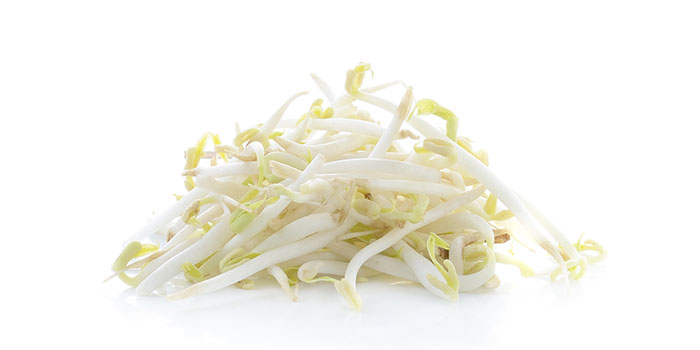
Pronounce it: been sp-rowts
The two most common beansprouts are the green-capped mung bean and the bigger, yellow-capped soy bean. Widely seen as a major, somehow magic, ingredient, beansprouts have little more nutrition than other fresh vegetables – but they do have novelty of flavour and an unusual texture. They’re often used by takeaway restaurants to bulk up serving sizes.
The NHS currently advises only eating raw beansprouts if they’re labelled ‘ready to eat’; all other sprouts should be cooked thoroughly until steaming hot throughout. People in vulnerable groups are advised to cook all sprouts until steaming hot throughout before eating.
You should also make sure to follow the manufacturers’ storage instructions. If these aren’t available, keep the beansprouts refrigerated at 5C or below and consume within two days. Don’t eat sprouts that are past their use-by date and avoid using sprouts that have turned brown or changed colour.
Availability
Widely available and, with care, can be grown at home.
Choose the best
Sprouts should smell fresh and green and be firm to the touch. Avoid any that are browning, floppy, have an acidic smell or are otherwise suspicious.
Store it
Keep sealed and chilled. Best eaten very soon after purchase.
Cook it
Beansprouts can be added to the last stages of any stir-fried dish. However, to ensure even cooking, it’s best to lightly cook them separately first, ideally in a microwave.
It’s also best to pre-cook beansprouts if using as an addition to a cold dish or salad.
Be the first to comment on "Beansprouts"